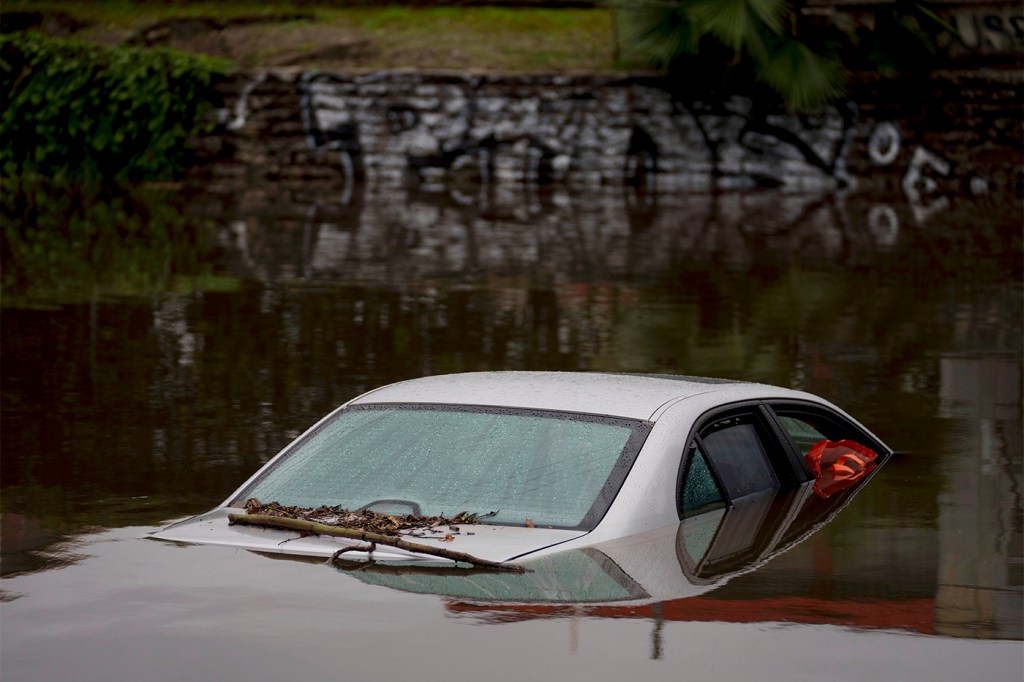Is it possible to survive a fall from a bridge like the one in Baltimore — then escape a submerged vehicle?
The collapse of the Francis Scott Key Bridge in Baltimore made some people wonder what to do if they were traveling across a roadway in that scenario.

A container ship struck the Francis Scott Key Bridge in Baltimore on Tuesday morning, causing it to partially collapse into the river below.
Eight members of a construction crew were believed to have been on the bridge at the time. Two were pulled from the water, but two bodies were recovered from a submerged truck on Wednesday morning, according to the Associated Press. Officials had to halt recover other bodies and vehicles for safety reasons.
A mayday call sent out prior to the collision about 1:30 a.m. enabled officials to stop traffic approaching the bridge, no doubt saving many lives.
Still, people who viewed horrific video of the collapse saw their worst fear come to life, and left many wondering: Would it be possible to survive a 180-foot fall into 50 feet of water and escape a submerged vehicle?
Stephen Wood, director of Northeastern’s Extreme Medicine certificate program and a disaster medicine expert, said the odds of someone surviving a catastrophic collapse like the one in Baltimore would be slim, but people can live through a vehicle submersion if prepared.

In the case of the Francis Scott Key Bridge, it’s difficult to survive a fall from a significant height, Wood said. When a body falls at great height and stops short, it can cause a deceleration injury in which the organs continue moving and cause internal damage.
“A 180-foot fall is going to cause pretty significant deceleration injury, and the likelihood of survival is low,” Wood said. “But here’s the issue with emergencies: Most people don’t think of or prepare for emergencies. That’s why people sometimes die when there’s survivability because they haven’t thought about how to get out of this situation.”
While it’s unlikely that someone could survive a drop and submersion in a car, Wood said it’s possible to survive your car getting trapped in water.
The first step is not to wait to open the car door or window, Wood said. Cars sink pretty quickly and electronic window systems will short-circuit within minutes of being exposed to water, making them impossible to open.
Similarly, car doors can’t be opened until the car is completely filled with water due to the unequal pressure the water exerts on the vehicle’s exterior. Wood said even a small amount of water can create pressure, making an escape by door a non-option.
“That is certainly something to not wait for and not do but something you see in cinematic representations of car escapes,” Wood said. “Data on people that have survived vehicle submersions … shows that getting out as quickly as possible is going to be the most imperative.”
If your car is sinking in water, the first thing to do is unbuckle your seatbelt, Wood said. The best route of escape from there is through breaking a window.
Wood said there are devices available designed specifically to break car windows and recommends carrying these in the car if you live near water. In case you don’t have one with you, you can use any piece of metal to break the glass. This can be anything from your key to the metal prong on your headrest.
From there, he said to try breaking the glass from the corner of the window, hitting it as hard as you can until it smashes.
“It’s not going to be like shattering a window pane in your home,” Wood said. “(It’s) safety glass, so it shatters as a unit. You could just put that out and escape.”
The other concern in submersion incidents is water temperature, which was about 47 degrees Fahrenheit in the Patapsco River under the Francis Scott Key Bridge in Baltimore. Wood said even in the summer when water runs warm, the temperatures still run lower than the human body, posing a risk of hypothermia.
“Even in 80-degree water, you can become hypothermic fairly quickly,” he said. “Moving your body parts around to stay warm is going to be imperative.”
Equally important is staying calm and having a plan in mind in the rare chance this does happen.
“That’s going to be a little bit difficult in this situation, but having your head around you is going to be helpful,” Wood said. “It’s hard to do something for the first time in an emergency (like breaking a window). But thinking about what you would do can certainly be helpful. These are incredibly rare events. It’s not like a fire drill where I’d say every year you should practice getting out of your house. But it’s certainly something to think about.”







